field guide to wilderness medicine
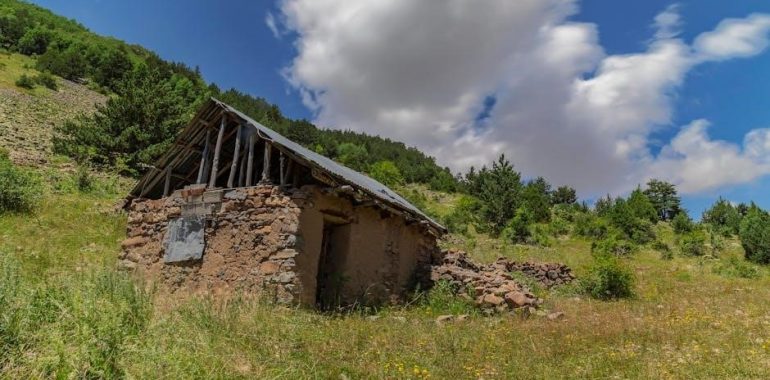
field guide to wilderness medicine
A Field Guide to Wilderness Medicine is an essential resource for medical professionals and adventurers alike, offering portable, authoritative guidance for emergency care in remote settings. These guides cover diverse medical situations, from traumatic injuries to environmental hazards, providing practical solutions for austere environments. They are designed to be accessible, ensuring both experienced physicians and laypersons can deliver effective care when traditional facilities are unavailable. Such manuals emphasize preparedness, improvisation, and decision-making, making them indispensable for wilderness expeditions and rescue operations.
1.1 Definition and Scope of Wilderness Medicine
Wilderness Medicine involves delivering medical care in remote, non-traditional settings where resources are limited. It encompasses the management of diverse emergencies, such as traumatic injuries, altitude sickness, and environmental exposures. The scope extends to improvising treatments with available tools, emphasizing preparedness and practical problem-solving. This field is crucial for adventurers, rescue teams, and healthcare providers working in austere conditions. The guides provide evidence-based protocols tailored to these unique environments, ensuring effective care despite logistical challenges, and are essential for anyone venturing into or working in wilderness areas. They bridge urban medical practices with the realities of remote care.
1.2 Importance of Wilderness Medicine in Remote Settings
Wilderness Medicine is vital in remote areas where traditional medical facilities are inaccessible. It equips practitioners with the skills to manage diverse emergencies, such as traumatic injuries or environmental hazards, using limited resources. The ability to improvise and make quick decisions is critical in these settings, ensuring patient survival and stability until professional help arrives. Field guides serve as indispensable tools, offering evidence-based protocols tailored to austere environments. They bridge the gap between urban healthcare and remote care, enabling effective medical responses in challenging conditions, ultimately saving lives in isolated locations.
1.3 Key Challenges in Wilderness Medical Care
Wilderness medical care faces unique challenges, including limited access to resources, delayed evacuation, and unpredictable environments. Practitioners must often improvise with available tools, treating severe conditions like trauma or altitude sickness with minimal equipment. Communication barriers, harsh weather, and the physical demands of remote settings further complicate care. Additionally, the psychological stress of working in isolated areas can impact decision-making. These challenges require providers to be highly adaptable, resourceful, and skilled in prioritizing patient needs under austere conditions, making wilderness medicine both demanding and critical for patient survival in remote locations.
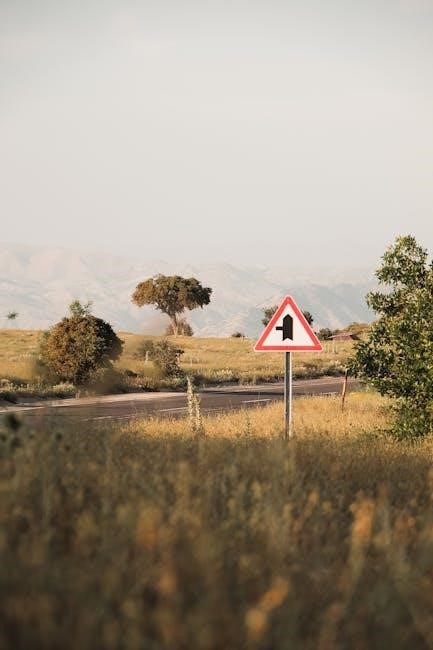
Core Principles of Wilderness Medicine
The core principles include patient assessment, triage, and resource management in austere environments. Emphasizing safety, improvisation, and minimal equipment, these principles guide effective care in remote settings.
2.1 Patient Assessment in the Wilderness
Patient assessment in the wilderness requires a systematic approach to identify injuries or illnesses promptly. Guides recommend starting with a primary survey, focusing on airway, breathing, circulation, and disability. Secondary assessments involve detailed examinations, considering environmental factors like temperature and altitude. These methods ensure that critical conditions are prioritized, and care is tailored to the remote setting. Effective communication and documentation are also emphasized to maintain continuity of care during evacuation or prolonged field treatment.
2.2 Triage and Decision-Making in Austere Environments
Triage and decision-making in wilderness settings require quick, effective prioritization of patients based on severity and resource availability. Guides emphasize assessing multiple casualties to allocate care efficiently, focusing on those most likely to benefit. Practical strategies include stabilizing critical injuries and delaying non-life-threatening treatments. Decision-making must balance patient needs with environmental risks and evacuation feasibility. Field manuals provide frameworks for these challenging scenarios, ensuring caregivers make sound judgments under pressure. Clear communication and documentation are crucial for maintaining organized care in austere conditions.
2.3 Use of Limited Resources for Medical Care
In remote settings, effective medical care hinges on maximizing limited resources. Field guides advocate for the use of lightweight, multi-purpose tools and supplies to address diverse emergencies. Techniques such as improvising splints from natural materials or repurposing clothing for dressings are emphasized. Conservation of water, energy, and medical equipment is crucial. Guides provide strategies to optimize resource allocation, ensuring sustained care during prolonged evacuations. Training in resourcefulness is essential for delivering effective medical aid when conventional supplies are scarce or unavailable.

Common Wilderness Injuries and Illnesses
Wilderness environments often lead to injuries like fractures, lacerations, and burns, as well as illnesses such as altitude sickness and heat-related conditions. Field guides provide practical strategies for managing these issues with limited resources, emphasizing prevention and early intervention to prevent complications. Proper wound care, splinting, and hydration techniques are critical. Recognizing symptoms of environmental illnesses, like hypothermia or dehydration, is essential for timely treatment. These guides equip practitioners with the knowledge to address common challenges effectively in remote settings.
3.1 Management of Traumatic Injuries
Managing traumatic injuries in the wilderness requires immediate assessment and stabilization. Field guides emphasize the importance of controlling bleeding, cleaning wounds, and preventing infection. Splinting fractures and immobilizing injuries are critical to avoid further damage. Techniques such as applying tourniquets or hemostatic agents can be lifesaving. Pain management, using available medications, and monitoring for shock are essential steps. Proper wound care, including irrigation and dressing, helps prevent complications. These strategies, outlined in wilderness medicine guides, enable effective care in remote settings with limited resources.
3.2 Diagnosis and Treatment of Altitude Sickness
Diagnosing altitude sickness involves recognizing symptoms like headaches, nausea, and fatigue, which worsen with exertion. Field guides recommend immediate rest, hydration, and gradual ascent. Mild cases may improve with over-the-counter medications like ibuprofen, while severe cases require descent or portable hyperbaric chambers. Preventive measures include ascending slowly to allow acclimatization. These strategies, detailed in wilderness medicine guides, help mitigate risks and ensure effective care in high-altitude environments.
3.3 Handling of Allergic Reactions and Anaphylaxis
Anaphylaxis is a severe allergic reaction requiring immediate intervention. Symptoms include swelling, difficulty breathing, and rapid heartbeat. Field guides emphasize administering epinephrine via an auto-injector, such as an EpiPen, as the first line of treatment. After administration, the patient should remain calm and seek urgent medical care. For milder allergic reactions, antihistamines like diphenhydramine may alleviate symptoms. Wilderness medical guides stress the importance of carrying essential medications and understanding when to escalate care, especially in remote settings with limited resources.

Environmental Hazards in Wilderness Medicine
Environmental hazards in wilderness settings include extreme temperatures and wildlife encounters. Prevention and management strategies are crucial to mitigate risks and ensure safe exploration of remote areas.
4.1 Prevention and Treatment of Hypothermia
Hypothermia occurs when body temperature drops below 95°F, often due to cold exposure. Prevention includes wearing layered, moisture-wicking clothing and staying dry. Recognizing early symptoms like shivering, confusion, and lethargy is critical. Treatment involves removing wet clothing, rewarming the person in a sheltered environment, and using blankets or body heat. Severe cases may require advanced rewarming techniques. Field guides emphasize the importance of prompt action to prevent life-threatening complications. Proper training and equipment are essential for managing hypothermia in remote settings.
- Prevention: Layer clothing, stay dry, and monitor weather conditions.
- Treatment: Rewarm gradually, use blankets, and provide warm fluids if conscious.
4.2 Management of Heat Stroke and Dehydration
Heat stroke and dehydration are critical conditions in wilderness settings. Prevention involves staying hydrated, wearing lightweight clothing, and avoiding peak sun exposure. Recognizing symptoms like dizziness, dry skin, and confusion is vital. Treatment includes rehydrating with water or oral solutions and cooling the body with shade or wet cloths. Severe heat stroke requires immediate cooling and medical attention. Field guides emphasize the importance of prompt action to prevent organ damage and ensure recovery.
- Prevention: Stay hydrated, wear light clothing, and rest in shade;
- Treatment: Rehydrate, cool the body, and seek medical help if severe.
4.3 Responding to Snake Bites and Venomous Encounters
Venomous encounters, particularly snake bites, require immediate and informed action. Symptoms may include pain, swelling, or respiratory distress. Stay calm, remove constricting items, and immobilize the affected limb. Do not apply a tourniquet or attempt to suck out venom. Clean the wound with soap and water, and seek medical attention promptly. Field guides emphasize the importance of recognizing venomous species and understanding first aid measures to improve outcomes in remote settings.
- Stay calm to slow venom spread.
- Remove tight clothing or jewelry near the bite.
- Immobilize the affected limb.
- Monitor vital signs and seek immediate medical help.
- Clean and dress the wound after swelling subsides.

Wilderness Medical Equipment and Supplies
A portable, lightweight wilderness first aid kit is essential, containing bandages, antiseptics, splints, and tools for wound care. These supplies must balance size and preparedness for emergencies.
5.1 Essential Items for a Wilderness First Aid Kit
A wilderness first aid kit should include bandages, antiseptic wipes, gloves, splints, pain relievers, and blister care. Tools like scissors, tweezers, and a tourniquet are also critical. Lightweight and compact, these supplies must balance portability with comprehensive care. Including medications for allergies and altitude sickness is vital. A basic suture kit and wound closure strips are recommended for deeper injuries. Personal protective equipment, such as masks, should be included to prevent infection transmission. Customize the kit based on the environment and potential risks to ensure preparedness for common wilderness emergencies.
5.2 Use of Improvised Medical Tools in the Field
In wilderness settings, improvised medical tools often become lifesavers. A tree branch can serve as a splint, while clothing or plastic bags can act as makeshift dressings or tourniquets. Duct tape is versatile for securing bandages or creating a sling. Natural materials like leaves or moss can aid in wound cleaning. The ability to repurpose everyday items is crucial in austere environments, where traditional supplies may be limited. These creative solutions highlight the importance of resourcefulness and ingenuity in wilderness medicine to address emergencies effectively. Always prioritize safety and hygiene when using improvised tools.
5.3 Maintenance and Inventory of Medical Equipment
Maintaining and organizing medical equipment is crucial for effective wilderness care. Regularly inspect supplies for damage or expiration, ensuring all items are functional and within their usable lifespan. Keep inventory lists to track quantities and expiration dates, restocking as needed. Store equipment in waterproof, durable containers to protect against environmental elements. Organize supplies by category (e.g., wound care, fracture management) for quick access. Routine checks and proper storage ensure readiness for emergencies, minimizing delays in critical situations. This systematic approach guarantees reliable medical equipment in remote and austere environments.

Communication and Navigation Skills
Effective communication and navigation are vital for ensuring safety and delivering timely medical care in remote environments, relying on both modern technology and traditional skills.
6.1 Importance of Reliable Communication Devices
Reliable communication devices are critical in wilderness medicine, enabling timely emergency alerts and coordination of care. Tools like satellite phones, two-way radios, and GPS trackers ensure connectivity in remote areas. These devices facilitate real-time updates, evacuation planning, and resource allocation, reducing response times and improving patient outcomes. Without dependable communication, medical teams risk isolation, delays, and limited access to essential supplies. Thus, investing in robust communication technology is vital for ensuring safety and effective medical response in austere environments.
6.2 GPS Navigation and Map Reading Techniques
GPS navigation and map reading are vital skills in wilderness medicine, ensuring precise location tracking and route planning. Combining GPS devices with compass navigation and landmark identification enhances accuracy. Topographic maps reveal terrain features, aiding in decision-making for patient transport or rescue routes. Natural navigation techniques, like using the sun or stars, serve as backups when technology fails. These skills are crucial for avoiding disorientation and ensuring timely medical responses in remote, low-visibility environments. Mastery of these tools significantly improves safety and efficiency in wilderness medical operations.
6.3 Signal Fire and Mirror Techniques for Rescue
Signal fires and mirror techniques are critical for rescue in wilderness settings. Building a signal fire involves creating a visible blaze, often in a triangle formation, to alert rescuers. Fires should be constructed on high ground or in open areas to maximize visibility. Mirrors, such as reflective objects or polished metal, can flash sunlight toward rescuers, signaling distress. Timing flashes in groups of three can convey an SOS message. These methods require precision and patience, ensuring rescue teams can locate stranded individuals efficiently in remote or low-visibility conditions.

Legal and Ethical Considerations
Legal and ethical considerations in wilderness medicine involve medical liability, ethical dilemmas, and informed consent, ensuring care aligns with standards and respects patient rights.
7.1 Medical Liability in Wilderness Settings
Medical liability in wilderness settings is a critical concern due to the high-risk nature of remote care. Providers must navigate limited resources, delayed evacuations, and uncertain legal frameworks. The Field Guide to Wilderness Medicine emphasizes understanding local laws and adhering to accepted standards of care, even in austere environments. Documentation is crucial, as it serves as a legal safeguard. Additionally, training and certification in wilderness medicine can mitigate liability risks by ensuring providers are equipped with the necessary skills and knowledge to deliver appropriate care under challenging conditions. Staying informed about legal protections and ethical guidelines is essential for all practitioners.
7.2 Ethical Dilemmas in Remote Medical Care
Ethical dilemmas in remote medical care are common due to limited resources and high-stakes decision-making. Providers often face tough choices, such as rationing supplies, prioritizing patients, or withholding information to maintain morale. The Field Guide to Wilderness Medicine highlights the importance of balancing patient autonomy with the greater good. Confidentiality may be compromised in small groups, and end-of-life decisions can arise in isolated settings. These challenges require a strong moral compass and adherence to ethical guidelines, ensuring care is both compassionate and fair, even in the most austere environments.
7.3 Informed Consent and Patient Rights in the Wilderness
In remote settings, obtaining informed consent can be challenging due to limited communication and high-pressure situations. Providers must ensure patients understand treatment risks and benefits, even with simplified explanations. Patient rights, such as dignity and privacy, must be respected, though practical limitations exist. Confidentiality may be compromised in group settings, but efforts to maintain privacy are essential. Documentation of consent and care is crucial for accountability. Balancing these principles with the urgency of wilderness medical care requires careful judgment to uphold ethical standards and patient autonomy in austere environments.
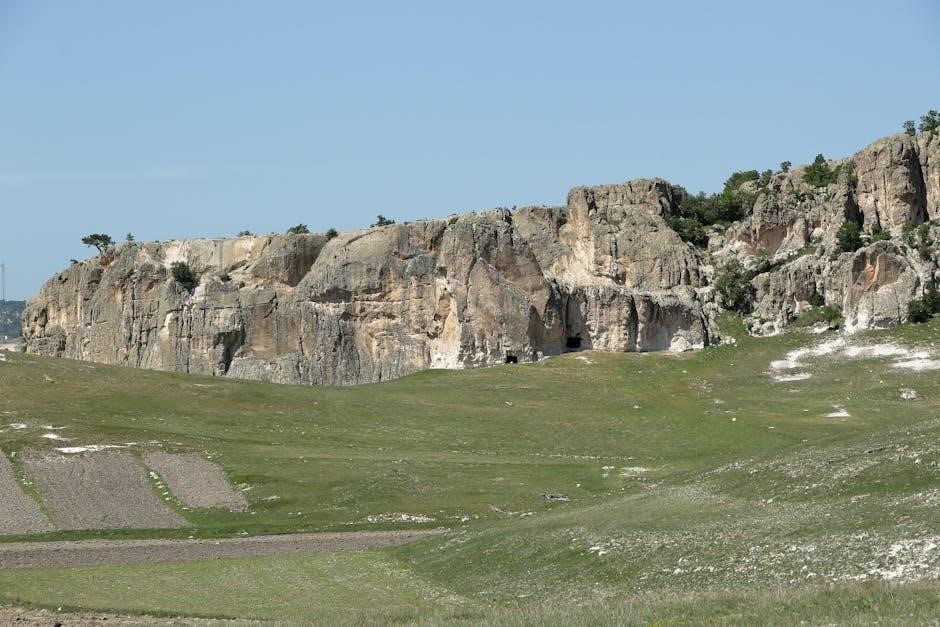
Mental Health in Wilderness Medicine
Mental health is crucial in wilderness settings, where isolation and stress can exacerbate conditions like anxiety and depression. Providers must recognize signs of distress and offer support to maintain team cohesion and safety. Techniques like psychological first aid and stress management are vital. Ensuring a stable mental state helps prevent crises and promotes resilience among team members in challenging environments.
8.1 Managing Stress and Fatigue in Remote Teams
Managing stress and fatigue in remote teams is critical for maintaining effectiveness and safety in wilderness settings. Leaders should promote open communication and encourage team members to express concerns. Regular breaks, task rotation, and ensuring adequate rest can mitigate physical and mental exhaustion. Techniques such as mindfulness and stress-reduction exercises can help individuals cope with the demands of remote environments. Additionally, fostering a supportive team culture enhances resilience and reduces the risk of burnout, ensuring the team remains functional under challenging conditions.
8.2 Recognition and Support for Mental Health Issues
Recognizing and addressing mental health issues in wilderness settings is vital for team cohesion and individual well-being. Early detection of signs such as anxiety, withdrawal, or irritability can prevent escalation. Providing emotional support through active listening and empathy helps individuals cope with stress. Creating a safe, non-judgmental environment encourages open discussion about mental health challenges. Team leaders should be trained to identify these issues and offer appropriate interventions or referrals to professional care when necessary, ensuring the well-being of all members in remote and isolated conditions.
8.3 Psychological First Aid in Crisis Situations
Psychological first aid is crucial in crisis situations to stabilize individuals and prevent long-term mental health issues. It involves creating a safe environment, assessing immediate needs, and providing reassurance. Techniques include active listening, empathy, and validation of feelings. Facilitating access to social support networks and connecting individuals to professional help when possible are key steps. The goal is to reduce stress, promote emotional recovery, and empower individuals to cope with the situation effectively. These interventions are essential for maintaining resilience in high-stress wilderness environments.
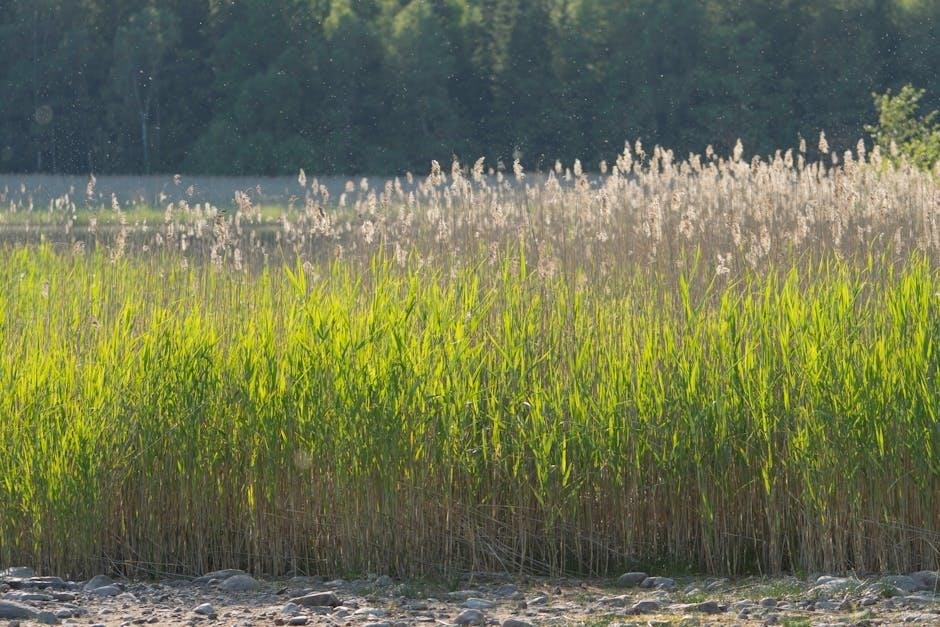
Future Trends in Wilderness Medicine
Advancements in portable medical devices and telemedicine are transforming wilderness medicine. Enhanced training programs and innovative tools are expected to improve care in remote settings.
9.1 Advances in Portable Medical Technology
Portable medical technology is revolutionizing wilderness medicine by enabling faster and more accurate diagnoses in remote settings. Compact devices like handheld ultrasounds, portable defibrillators, and lightweight diagnostic tools enhance patient care in austere environments. These innovations allow practitioners to assess and treat conditions efficiently, reducing reliance on bulky equipment. Additionally, advancements in wearable health monitors and telemedicine-integrated devices facilitate real-time remote consultations, improving decision-making and outcomes. Such technologies are critical for delivering effective care in challenging wilderness scenarios, ensuring better patient outcomes and operational efficiency.
9.2 Integration of Telemedicine in Wilderness Care
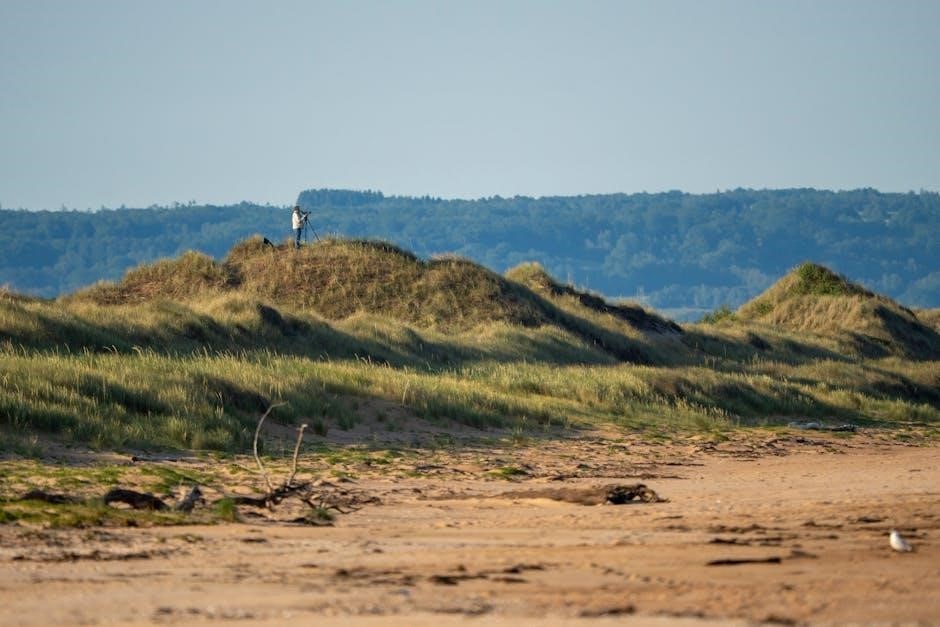
Telemedicine is transforming wilderness care by enabling real-time consultations between remote medical teams and specialists. Using satellite or cellular connectivity, practitioners can access expert advice, reducing delays in critical situations. This technology is particularly valuable for diagnosing complex conditions, guiding treatments, and determining evacuation needs. Telemedicine also supports ongoing training and resources for wilderness healthcare providers. Its integration enhances decision-making, improves patient outcomes, and bridges gaps in remote medical care, making it an indispensable tool in modern wilderness medicine.
9.3 Innovations in Wilderness Medical Training
Recent advancements in wilderness medical training emphasize hands-on simulation-based learning, enabling practitioners to practice real-world scenarios in controlled environments. Virtual reality (VR) and augmented reality (AR) are being integrated to simulate wilderness emergencies, enhancing decision-making skills. Online platforms now offer flexible, remote learning opportunities, while hybrid models combine digital and in-person instruction. These innovations ensure that wilderness medicine training is more accessible, engaging, and effective, better preparing individuals to handle remote medical challenges. They also foster collaboration, standardizing protocols and improving overall care in austere settings.